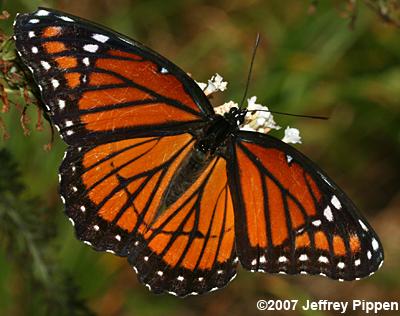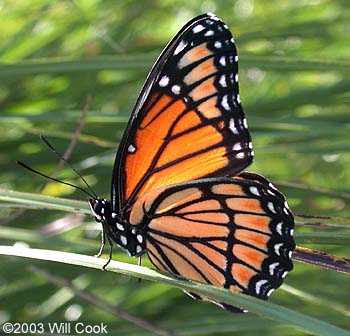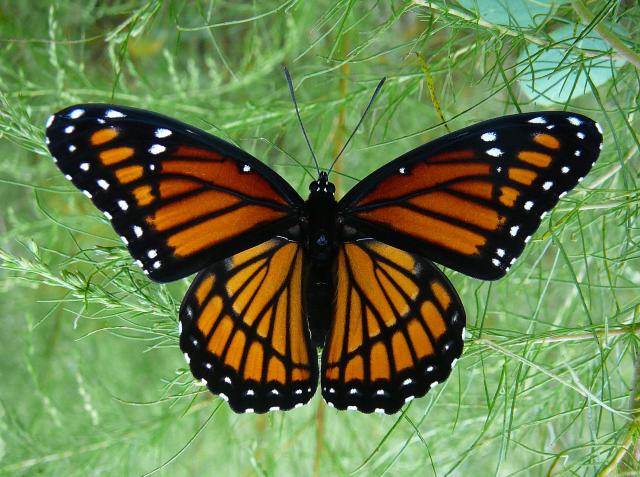| Common Name begins with: [ A ] [ B ] [ C ] [ D ] [ E ] [ F ] [ G ] [ H ] [ I ] [ J ] [ K ] [ L ] [ M ] [ N ] [ O ] [ P ] [ Q ] [ R ] [ S ] [ T ] [ V ] [ W ] [ Y ] [ Z ] |
| Scientific Name begins with: [ A ] [ B ] [ C ] [ D ] [ E ] [ F ] [ G ] [ H ] [ J ] [ L ] [ M ] [ N ] [ O ] [ P ] [ S ] [ T ] [ U ] [ V ] [ Z ] |
| Once on a species account page, clicking on the "View PDF" link will show the flight data for that species, for each of the three regions of the state. Other information, such as high counts and earliest/latest dates, can also been seen on the PDF page. |
| Related Species in NYMPHALIDAE: | |
|---|---|
<<   >> >> | |
| Links to other butterfly galleries: [Cook] [Lynch] [Pippen] [Pugh] | |||
| Photo Gallery for Viceroy | |||
| Photo by: Jeff Lewis Comment: aberrant morph, Dare Co.; 29 June 2008 Viceroy - Click to enlarge |  | Photo by: Jeff Pippen Comment: Brunswick Co.; 25 Aug 2007 Viceroy - Click to enlarge | |
 | Photo by: W. Cook Comment: Durham Co.; 19-Sep-2003 Viceroy - Click to enlarge |  | Photo by: Floyd Williams Comment: 2007-Sep-27. Gates Co., Merchants Millpond State Park Viceroy - Click to enlarge |